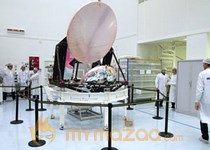A probe designed to delve into the "Big Bang" that created the cosmos has uncovered an enigmatic fog of microwave radiation in the centre of our galaxy, European astronomers reported on Monday.
Planck, a billion-dollar European space telescope launched in May 2009, found "a mysterious haze of microwaves that presently defies explanation" during a scan of the centre of the Milky Way, the European Space Agency (ESA) said.
It could be a form of energy called synchrotron emission, which occurs when electrons zip through magnetic fields after being accelerated by the blast of an exploding star, or supernova.
But the newly discovered emission is something of a mystery, as its signature lingers far longer compared with other synchrotron sources spotted in the Milky Way.
Several explanations have been offered, ranging from higher rates of supernovae in the galactic centre to the annihilation of so-called dark matter particles, ESA said in a press release.
Planck, deployed in orbit 1.5 million kilometres (937,000 miles) from Earth, is designed to pick up tiny variations in temperature in microwave energy released after the Big Bang that created the universe some 14 billion years ago.
Scientists looking at the data have to filter out a haze of microwave emissions that obscure the precious telltale, known as Cosmic Microwave Background (CMB) radiation.
The new results are being presented this week at a conference in Bologna, Italy, which is looking at the intermediate results from the mission.
Planck has also located concentrations of carbon monoxide among the clouds of cold gas in the Milky Way and other galaxies that are a reservoir for making stars.







